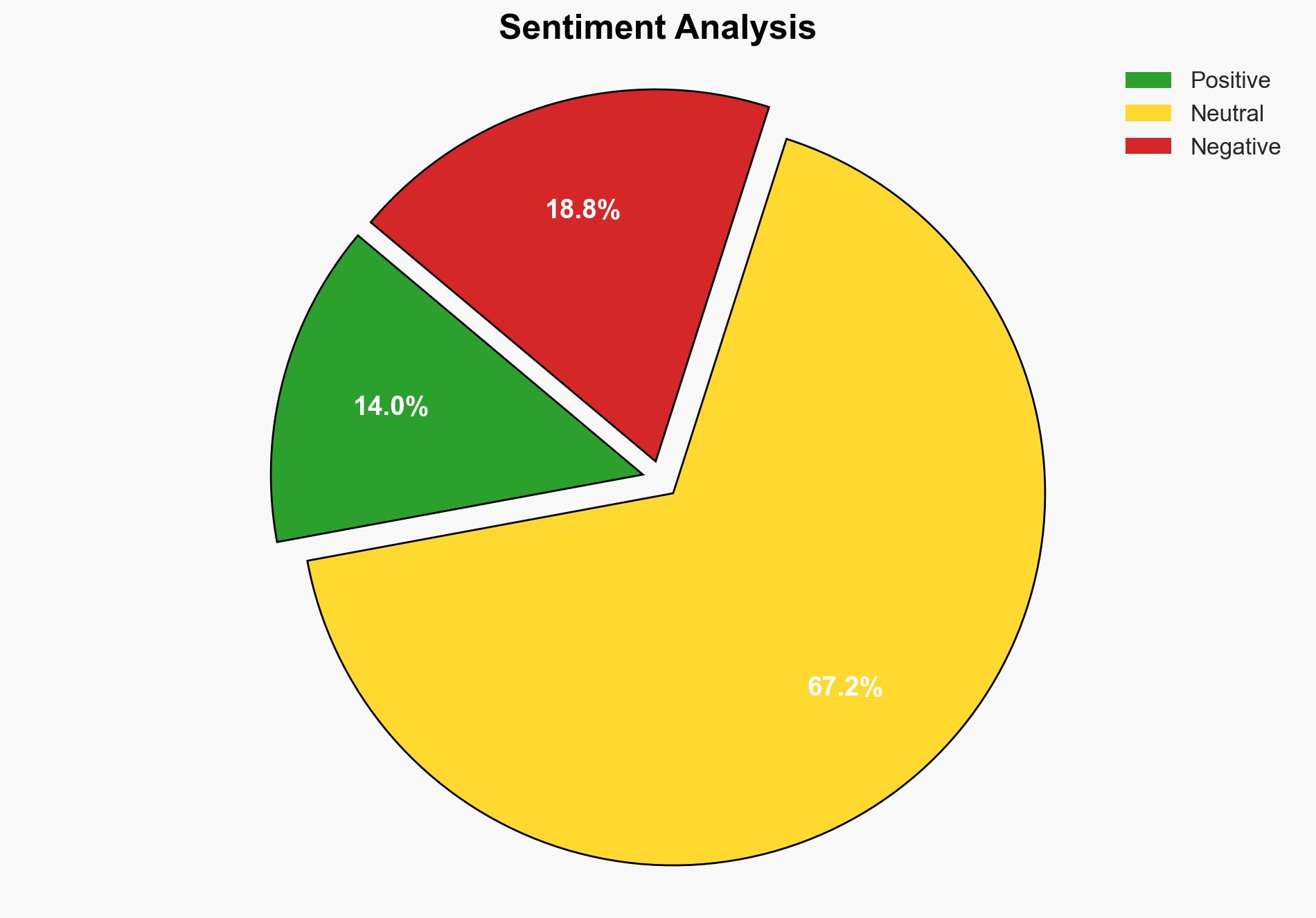Commentary Why the Israel-Hamas ceasefire fell apart – CNA
Published on: 2025-03-19
Intelligence Report: Commentary Why the Israel-Hamas ceasefire fell apart – CNA
1. BLUF (Bottom Line Up Front)
The Israel-Hamas ceasefire collapsed due to unresolved core issues, power imbalances, and strategic maneuvers by both parties. Key factors include Israel’s military actions, Hamas’s refusal to release hostages, and geopolitical influences from external actors. Immediate recommendations focus on addressing humanitarian needs and diplomatic engagement to prevent further escalation.
2. Detailed Analysis
The following structured analytic techniques have been applied for this analysis:
General Analysis
The ceasefire, initially seen as a relief, was undermined by deep-seated issues such as the power disparity between Israel and Hamas. Israel’s military superiority and political leverage allowed it to dictate terms, while Hamas sought to regroup and rearm. External influences, notably from the United States, further complicated the situation, with proposals perceived as biased towards Israeli interests. The ceasefire’s failure highlights the need for addressing root causes rather than temporary solutions.
3. Implications and Strategic Risks
The collapse of the ceasefire poses significant risks to regional stability and national security. Continued hostilities could lead to increased casualties and humanitarian crises in Gaza. The potential for broader regional conflict remains, with implications for neighboring countries and global economic interests. The situation also risks exacerbating tensions between Israel and other regional actors, such as Hezbollah in Lebanon and factions in Syria.
4. Recommendations and Outlook
Recommendations:
- Engage in multilateral diplomatic efforts to address core issues and facilitate a sustainable peace process.
- Enhance humanitarian aid to Gaza to alleviate immediate needs and prevent further deterioration of living conditions.
- Encourage dialogue between conflicting parties with the support of neutral international mediators.
Outlook:
In the best-case scenario, renewed diplomatic efforts lead to a lasting ceasefire and progress towards a comprehensive peace agreement. The worst-case scenario involves escalation into a broader conflict affecting regional stability. The most likely outcome is a continuation of sporadic violence with intermittent ceasefires, necessitating ongoing international engagement and monitoring.
5. Key Individuals and Entities
The report mentions significant individuals and organizations, including Benjamin Netanyahu, Donald Trump, Steve Witkoff, and Jared Kushner. These individuals have influenced the dynamics of the ceasefire and subsequent developments.





